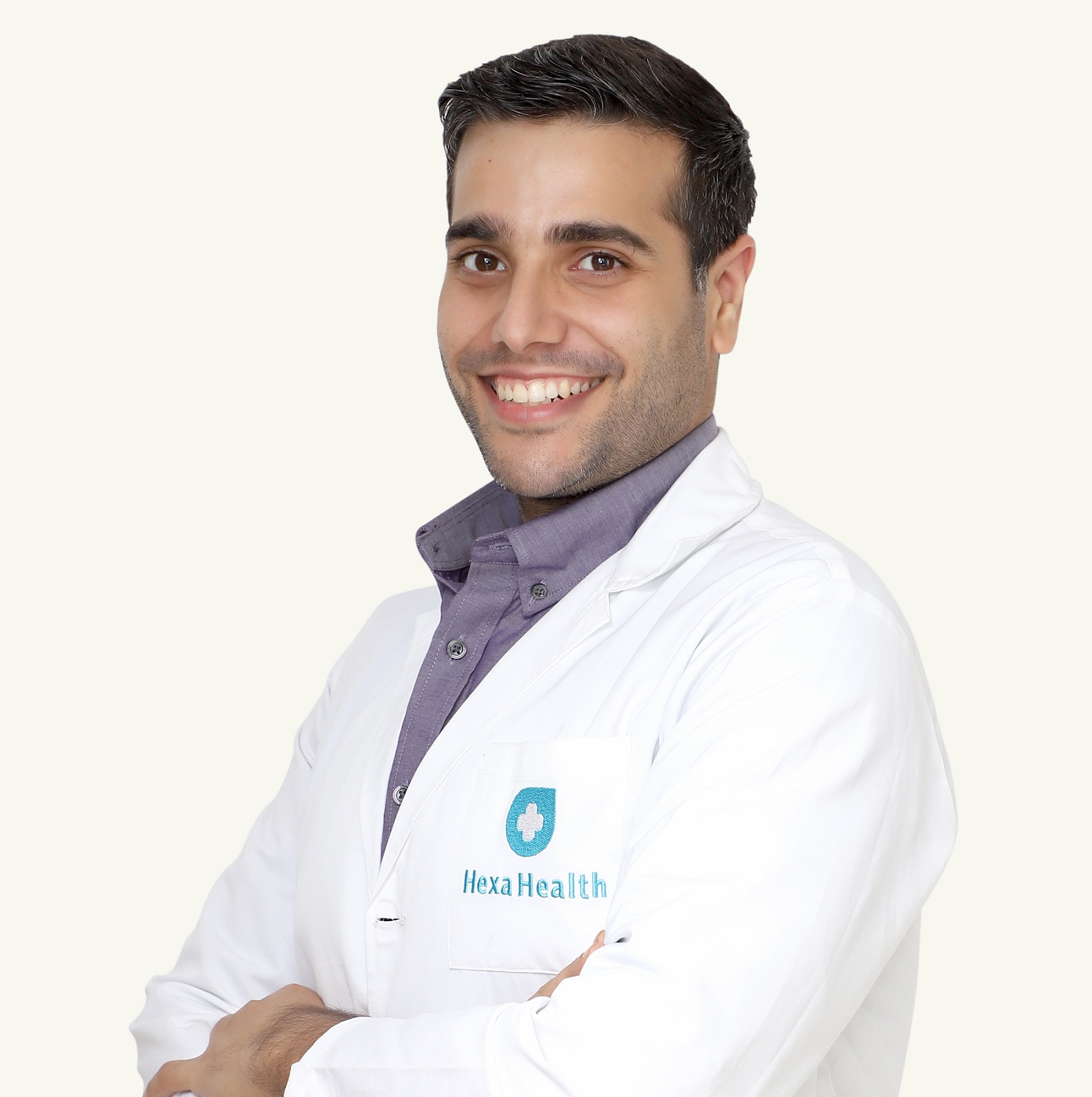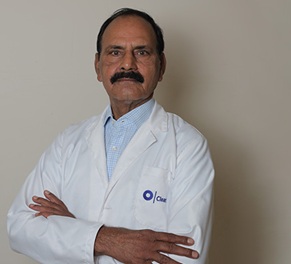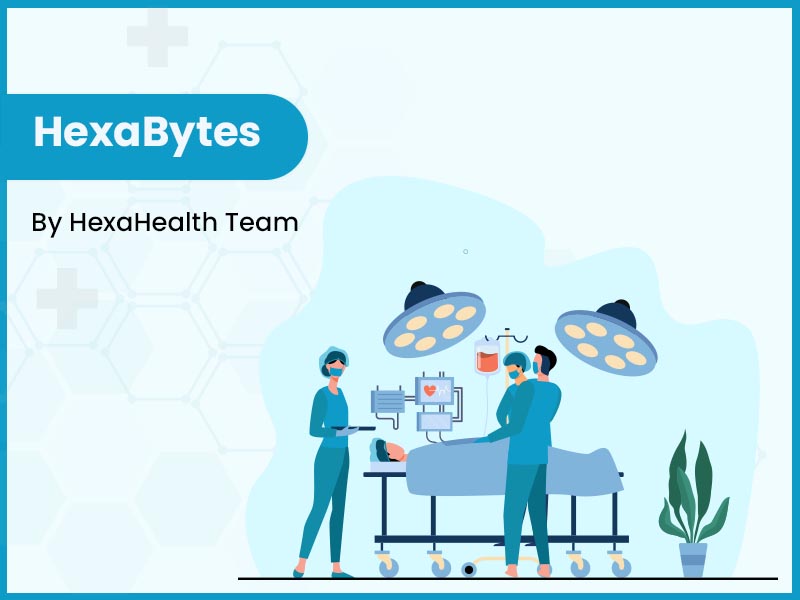Umbilical Hernia Surgery - Procedure and Recovery Time
Dr. Aman Priya Khanna

Treatment Duration
30 Minutes
------ To ------45 Minutes
Treatment Cost
₹ 65,000
------ To ------₹ 1,20,000

Table of Contents
- What is umbilical hernia surgery?
- Who needs an umbilical hernia surgery?
- Before and on the Day of Umbilical Hernia Surgery
- Umbilical Hernia Surgery Procedure
- After Surgery and Recovery
- Benefits of Umbilical Hernia Surgery
- Risks and Complications of Umbilical Hernia Surgery
- Risks of Delaying Umbilical Hernia Surgery
- Umbilical Hernia Surgery Cost
- Takeaway
According to Surg et al., 2021, it is estimated that approximately 20 million hernias are repaired worldwide every year. The stats highlight the growing need for umbilical hernia repair in the country and beyond.
Whether you're considering surgery yourself or for a loved one, understanding the aspects of this treatment is important. Read for detailed information about umbilical hernia surgery recovery time, benefits, and risks!
Procedure Name | Umbilical Hernia Surgery |
Alternative Name | Umbilical hernia repair, herniorrhaphy |
Conditions Treated | Umbilical hernia |
Benefits of Procedure | Safe, same-day discharge, low recurrence rate |
Treated By | General surgeon |
You can check Umbilical Hernia Surgery Cost here.
What is umbilical hernia surgery?
Umbilical hernia surgery is a medical procedure performed to repair a hernia at or near the belly button (umbilicus). Hernias develop when tissue or organs protrude from a weakened location in the abdominal wall muscles. Various techniques are available for umbilical hernia repair, including:
Open: Involves making a single larger incision near the umbilicus to access and repair the hernia.
Laparoscopic: Utilises small incisions and a camera to guide the surgical instruments, resulting in less tissue trauma and faster recovery.
Robotic: Employs robotic-assisted technology to enhance precision during the procedure.
Anatomy of the Navel
The navel is a slight abdominal depression, marking where the umbilical cord was attached during foetal development. The end of the umbilical cord connects a baby to its mother in the womb. The major parts include:
Umbilical Ring: This area contains the remains of blood vessels and connective tissue from the umbilical cord.
Umbilical Skin: The skin covering the belly button is often slightly different in texture and appearance from the surrounding skin. Depending on individual anatomy, it may form a small protrusion.
Internal Anatomy: Beneath the surface, the umbilicus connects to the abdominal cavity, surrounded by abdominal muscles and other structures. They help support the abdominal organs and play a role in breathing and movement.
Umbilical Hernia Surgery Videos by HexaHealth
Expert Doctors (10)
NABH Accredited Hospitals (10)
Umbilical Hernia Surgery Success Stories


Who needs an umbilical hernia surgery?
Umbilical hernia surgery is recommended for individuals with hernias that cause significant symptoms or complications. The signs that may indicate the need for this treatment are:
Persistent pain or discomfort around the navel, especially when lifting heavy objects.
If the hernia increases in size or becomes more prominent.
When it becomes incarcerated (trapped) or strangulated (blood supply to the herniated tissue is compromised).
Before and on the Day of Umbilical Hernia Surgery
Before umbilical hernia surgery, patients are given instructions to minimise the risk of complications. They should follow preoperative guidelines regarding medications, hygiene, and arrival time at the surgical facility.
Before Surgery
Before the treatment, the doctor may take umbilical hernia surgery before and after pictures to document the hernia appearance. These images are a reference point for assessing the surgical outcome and tracking the healing process. Other things involved are:
Parameters | Pre-requisites |
Pre-op Assessment | Blood work, chest X-ray, EKG (electrocardiogram) |
Risk Evaluation |
|
Anaesthesia Selection | Mostly general |
Fasting |
|
On the Day of Surgery
On the day of surgery, it's advised not to use lotion, perfumes, or nail polish. Patients should also avoid shaving the surgical site to prevent skin irritation or infection.
Parameters | Pre-requisites |
Consent | Mandatory |
Surgical Preparation | Removing jewellery and piercings, cleansing the surgical site |
Physical Evaluation | Vital signs check-up (pulse rate, temperature, blood pressure) |
IV Line | Fluids are administered |
Anaesthesia Administration | The dosage is provided based on the physical evaluation |
Umbilical Hernia Surgery Procedure
Umbilical hernia surgery is recommended by a doctor after careful evaluation, considering factors like hernia size. Different techniques, such as open, laparoscopic, and robotic repair, serve distinct purposes. An overview of the process of each method is provided below.
Open Umbilical Hernia Repair
Open repair involves making a single larger incision near the umbilicus. It takes around 20 to 30 minutes to complete.
An incision is made near the umbilicus.
The hernia sac is identified and dissected.
The protruding tissue is pushed into the abdominal cavity.
The weakened abdominal wall is reinforced with stitches or a mesh patch.
The cut is closed with sutures or surgical staples.
Laparoscopic Umbilical Hernia Repair
Laparoscopic repairs need at least one hour to perform, including tiny incisions and a camera for guidance. The procedure involves:
Small incisions are made in the abdomen.
A camera and specialised instruments are inserted through the incisions.
It pushes the tissue that is sticking out back into the abdominal cavity.
A mesh patch is placed over the hernia defect and secured in place.
The cuts are closed.
Robotic Umbilical Hernia Repair
Robotic repair utilises robotic-assisted technology for enhanced precision. The procedure takes around 5 hours or longer.
Small incisions are made in the abdomen.
Robotic arms with surgical instruments are inserted through the incisions.
The hernia sac is carefully dissected using robotic instruments.
The protruding tissue is reduced, and a mesh patch is placed over the hernia defect.
The mesh is secured and put in place with sutures or surgical staples.
The incisions are closed, and the robotic arms are removed.
After Surgery and Recovery
After umbilical hernia surgery, patients experience some discomfort and may be prescribed pain medication as needed. The entire recovery process is described below.
The Recovery Process in Hospital
Following umbilical hernia surgery, patients are monitored in the recovery room for a few hours until fully awake and stable. As it's an outpatient procedure, they are discharged the same day. However, if the hernia is large, some repairs could necessitate a brief hospital stay.
For at least 24 hours following the treatment, adults must refrain from consuming alcohol, operating machinery, driving, and signing legal papers. This is because general anaesthetic may affect your ability to coordinate and reason.
Recovery Process/Expectation after Hospital Discharge
After the treatment, one can expect an umbilical hernia surgery recovery time of 4 to 6 weeks. At home, the patient may experience bruising, tenderness, and swelling around the wound. This usually improves within a week. Other pointers to consider during this period are:
Loose clothing may help in relieving soreness.
Pain surrounding the wound may occur when straining on the toilet. This risk can be reduced by eating fibre-rich foods and staying hydrated.
After surgery, children would have to skip approximately a week of school.
Patients may resume their regular activities in two weeks.
Heavy lifting and exhausting activities must be avoided for 4 to 6 weeks.
First Follow-up Appointment
Patients usually have their first follow-up appointment approximately 7 to 14 days after umbilical hernia surgery. During this visit, the doctor removes sutures and examines the wound to ensure proper healing. It's an essential step in the recovery process to monitor progress and address potential concerns.
Benefits of Umbilical Hernia Surgery
With a low recurrence rate of approximately 1.2%, modern methods like robotic umbilical hernia surgery offer several benefits for patients. The points highlighting the advantages are:
Safety: The surgery is generally safe, with low rates of complications (less than 1% in case of paediatric hernia repairs) when performed by experienced surgeons.
Low Recurrence Rate: When performed using appropriate techniques and materials, umbilical hernia surgery has a recurrence rate of just 2.7% in mesh repair. In contrast, for non-mesh repair, it is 27%.
Minimally Invasive Options: Many surgeries can be performed using techniques such as laparoscopy. This results in smaller incisions, less pain, and faster recovery.
Daycare Treatment: Most umbilical hernia surgeries, like laparoscopic and robotic, are outpatient. This allows patients to go home on the same day as surgery.
Risks and Complications of Umbilical Hernia Surgery
Despite its benefits, umbilical hernia surgery carries risks of complications. The early complications occur in approximately 6.7% of cases with traditional sutures. However, through mesh repair, the rate goes down to 4.3%. The potential issues associated with the treatment are:
Potential risk of infection at the surgical site, which may require antibiotic treatment.
Excessive bleeding may necessitate further intervention or blood transfusion.
Fluid buildup in the surgical area can lead to the formation of a seroma, requiring drainage.
Blood accumulation in the treated area can form a hematoma, causing swelling and discomfort.
Adverse reactions to anaesthesia, such as respiratory or cardiovascular issues.
When to consult a doctor?
It's important to consult a doctor if you experience any concerning symptoms before or after umbilical hernia surgery. The situations that warrant a visit are:
Persistent or worsening pain around the surgical site or abdomen.
Fever above 100.4°F (38°C).
Increase in redness, swelling, warmth, or drainage (such as pus) from the incision site.
Consistent nausea, vomiting, or difficulty tolerating food or fluids.
Troubled breathing, chest pain, or other respiratory symptoms.
Risks of Delaying Umbilical Hernia Surgery
Delaying surgery increases the possibility of the hernia being trapped or strangulated (blood supply to the herniated tissue is interrupted). Symptoms such as pain, discomfort, and the visible protrusion of the hernia may also worsen over time.
Umbilical Hernia Surgery Cost
The cost of umbilical hernia surgery can differ due to factors such as the technique and additional medical expenses. On average, the price one can expect is:
Treatment Name | Estimated Cost Range |
Laparoscopic Umbilical Hernia Repair | ₹ 75,000 to ₹ 1,20,000 |
Note: The estimate mentioned above is subject to change. To get accurate information, contact HexaHealth.
Factors that may affect the umbilical hernia surgery cost include:
Surgeon's Reputation: Doctors with extensive experience may charge higher fees for their services.
Hospital or Surgical Facility Fees: The charges associated with the use of the operating room and medical equipment can significantly impact the overall bill.
Pre and post-operative Evaluation: Costs associated with examinations and consultations may add to the total expense. Follow-up appointments, medications, and any necessary additional treatments can also contribute to total expense.
Health Insurance: The extent of coverage and deductibles can influence out-of-pocket expenses for the patient.
Takeaway
Understanding the techniques available for umbilical hernia repair is crucial for patients considering this surgery. From the traditional open approach to the minimally invasive laparoscopic methods, each procedure offers unique advantages.
HexaHealth provides top-notch assistance throughout the process. We offer expert advice on everything from which surgery is best for umbilical hernia to locating skilled doctors to perform the procedure. Get in touch!
Frequently Asked Questions (FAQ)
Which surgery is best for umbilical hernia?
The best surgery for an umbilical hernia depends on factors like hernia size, the patient's health, and the surgeon's recommendation. Options include open repair for larger hernias, laparoscopic for minimal invasiveness, and robotic for enhanced precision.
When should you have umbilical hernia surgery?
Umbilical hernia surgery is recommended when the hernia causes significant symptoms. These include:
Pain
Discomfort
Complications like incarceration or strangulation
What size of umbilical hernia needs surgery?
In adults, umbilical hernias larger than 4 cm generally require surgery to prevent complications and alleviate symptoms. For children, treatment may be recommended for hernias larger than 2 cm. This is because there are lower chances of the issue getting resolved on its own.
How to prepare for umbilical hernia surgery?
To prepare for umbilical hernia surgery, follow preoperative instructions provided by your healthcare provider. These include:
No food and fluid intake post midnight.
Avoiding aspirin and blood thinners.
Arrangements for transportation to and from the surgical facility.
How is umbilical hernia surgery performed?
Umbilical hernia surgery is mostly performed under general anaesthesia. It can be performed with different approaches. In general, the surgeon makes an incision near the umbilicus and repairs the weakened abdominal wall. After the treatment, the cut is closed with stitches or a mesh patch.
How much does umbilical hernia surgery cost?
The estimated umbilical hernia surgery cost starts from ₹ 65,000 and can go up to ₹ 1,20,000. Contact HexaHealth experts to get accurate information.
Can umbilical hernia be treated without surgery?
While simple exercises may resolve umbilical hernias in many children, surgery is often necessary for adults. This is because, in adults, they tend to persist or worsen over time, necessitating surgical intervention.
How to sleep after umbilical hernia surgery?
After umbilical hernia surgery, it's often recommended to sleep on your back with your upper body slightly elevated using a small pillow. This helps reduce strain on the surgical site.
What to eat after umbilical hernia surgery?
After umbilical hernia surgery, it's advisable to consume easily digestible foods. These include:
Lean proteins
Fruits and vegetables
Whole grains
Can an umbilical hernia come back after surgery?
The recurrence rate of umbilical hernias after surgery is significantly lower, at just 2.7%, when mesh is used. Regular follow-up with healthcare providers is essential to monitor for any signs of recurrence.
Are there any risks associated with umbilical hernia surgery?
Umbilical hernia surgery, like any surgical procedure, carries certain risks. The potential risks associated with this method are:
Infection
Bleeding
Hematoma
Seroma
What is the recovery time after umbilical hernia surgery?
The recovery time after umbilical hernia surgery ranges from 4 to 6 weeks. During this period, patients gradually resume normal activities while avoiding strenuous activities.
Can umbilical hernia surgery be done without general anaesthesia?
Umbilical hernia surgery can only be carried out under general anaesthesia to ensure the patient is unconscious and pain-free. This allows the surgeon to perform the surgery safely and efficiently while minimising discomfort.
What types of surgery are available for umbilical hernia repair?
Various surgical techniques are available for umbilical hernia repair, each with its own advantages and considerations. The main types are:
Open hernia repair
Laparoscopic hernia repair
Robotic-assisted hernia repair
Is umbilical hernia surgery covered by insurance?
Yes, umbilical hernia surgery is covered by health insurance. However, coverage may differ depending on individual plans. It's important to check with HexaHealth for specific details.
What should I expect before and after umbilical hernia surgery?
Before umbilical hernia surgery, expect preoperative evaluations and instructions on fasting. After surgery, anticipate postoperative discomfort and restrictions on physical activities during the first 2 weeks.
How long do I need to stay in the hospital after umbilical hernia surgery?
After umbilical hernia surgery, most patients can expect to go home the same day, as it is typically an outpatient procedure. However, individual recovery times may vary, and some patients may require an overnight hospital stay.
Are there any dietary restrictions after umbilical hernia surgery?
After umbilical hernia surgery, patients may be advised to follow certain dietary restrictions to promote healing. These include:
Spicy or heavily seasoned foods
Carbonated beverages
Foods high in refined sugars
Fatty or fried foods
What activities should be avoided after umbilical hernia surgery?
After umbilical hernia surgery, it's important to avoid heavy lifting and intense exercises for about 4 to 6 weeks. Additionally, activities that involve straining or putting pressure on the abdominal area.
Can umbilical hernia surgery be done laparoscopically?
Yes, umbilical hernia surgery can be performed laparoscopically, offering benefits like smaller incisions and reduced postoperative pain. This approach involves using a camera and specialised instruments inserted through small incisions to repair the hernia.
What are the success rates of umbilical hernia surgery?
Umbilical hernia surgery has a success rate of approximately 79.1%, indicating its effectiveness in repairing hernias. This underscores the reliability of surgical intervention for managing this common condition.
How painful is umbilical hernia surgery?
Umbilical hernia surgery involves no pain during the procedure due to general anaesthesia. However, patients may experience discomfort for up to 7 days post-surgery, which can be managed with pain medications.
Is umbilical hernia surgery safe?
Umbilical hernia surgery is considered safe, with a complication rate of less than 1%. This low rate highlights the overall safety and effectiveness of the procedure in treating umbilical hernias.
Which surgery is best for umbilical hernia: open or laparoscopic?
Both open and laparoscopic surgeries are effective for umbilical hernia repair. However, laparoscopic option offers advantages such as smaller incisions, less postoperative pain, and faster recovery times. This makes it a preferred choice for many patients.
What is the latest technology for hernia surgery?
The latest technology for hernia surgery involves robotic-assisted techniques, where surgeons perform the procedure with enhanced precision and control. This leads to shorter recovery times and improved outcomes.
What is the safest hernia repair?
Laparoscopic hernia repair is often considered one of the safest options. It involves smaller incisions and reduced risk of complications. With modern technique updates, like the use of mesh repair, the surgery is associated with lower recurrence rates.
Does umbilical hernia surgery leave a scar?
Yes, umbilical hernia surgery can leave scars. Open surgery results in a single scar near the umbilicus. On the other hand, the laparoscopic method may leave several smaller scars due to the use of multiple incisions.
More Treatment options
References
All the articles on HexaHealth are supported by verified medically-recognized sources such as; peer-reviewed academic research papers, research institutions, and medical journals. Our medical reviewers also check references of the articles to prioritize accuracy and relevance. Refer to our detailed editorial policy for more information.
- Umbilical hernia repair: MedlinePlus Medical Encyclopedia [Internet]. Medlineplus.gov. 2017.

- Umbilical hernia repair - How it’s performed [Internet]. nhs.uk. 2018.

- Hernia Repair: Before Your Surgery [Internet]. myhealth.alberta.ca.

- Malibary N, Shurrab M, Albariqi MO, Bohairi M, Basabain AS, Alqurashi MY, et al. Quality of Life After Umbilical Hernia Repair. Cureus. 2021 Oct 24;

- Troullioud Lucas AG, Jaafar S, Panda SK, Mendez MD. Pediatric Umbilical Hernia [Internet]. PubMed. Treasure Island (FL): StatPearls Publishing; 2024 [cited 2024 May 6].

- Mannion J, Hamed MK, Negi R, Johnston A, Bucholc M, Sugrue M. Umbilical hernia repair and recurrence: need for a clinical trial? BMC Surgery. 2021 Oct 12;21(1).

- Early complications in surgery of umbilical and epigastric hernias. Perspectives in Surgery. 2020 May 15;99(5):207–11.

- Umbilical Hernia Surgery Cost in India - Calculate Estimated Cost [Internet]. www.hexahealth.com. [cited 2024 May 6].

- Pandya B, Huda T, Gupta D, Mehra B, Narang R. Abdominal Wall Hernias: An Epidemiological Profile and Surgical Experience from a Rural Medical College in Central India. Surgery Journal [Internet]. 2021 Jan 1;07(01):e41–6.

- Konaté I, Ndong A, Tendeng JN. Umbilical Hernias in Adults: Epidemiology, Diagnosis and Treatment [Internet]. www.intechopen.com. IntechOpen; 2020 [cited 2024 May 6].

- Umbilical hernia repair | Health Information | Bupa UK [Internet]. www.bupa.co.uk. [cited 2024 Mar 28].

- Abhishek V, Mallikarjuna MN, Shivaswamy BS. Laparoscopic Umbilical Hernia Repair: Technique Paper. ISRN Minimally Invasive Surgery. 2012 Sep 16;2012:1–4.

- Robotic Hernia Surgery: How It’s Done, Recovery and Side Effects [Internet]. Cleveland Clinic.

Last Updated on: 6 May 2024
Reviewer

Dr. Aman Priya Khanna
MBBS, DNB General Surgery, Fellowship in Minimal Access Surgery, FIAGES
14 Years Experience
Dr Aman Priya Khanna is a well-known General Surgeon, Proctologist and Bariatric Surgeon currently associated with HealthFort Clinic, Health First Multispecialty Clinic in Delhi. He has 14 years of experience in General Surgery, Proctolo...View More
Author

Sparshi Srivastava
B.Tech Biotechnology (Bansal Institute of Engineering and Technology, Lucknow)
2 Years Experience
An ardent reader, graduated in B.Tech Biotechnology. She was previously associated with medical sciences secondary research and writing. With a keen interest and curiosity-driven approach, she has been able to cont...View More
Umbilical Hernia Surgery in Top Cities
Umbilical Hernia Surgery Cost in Top Cities
Latest Health Articles
































